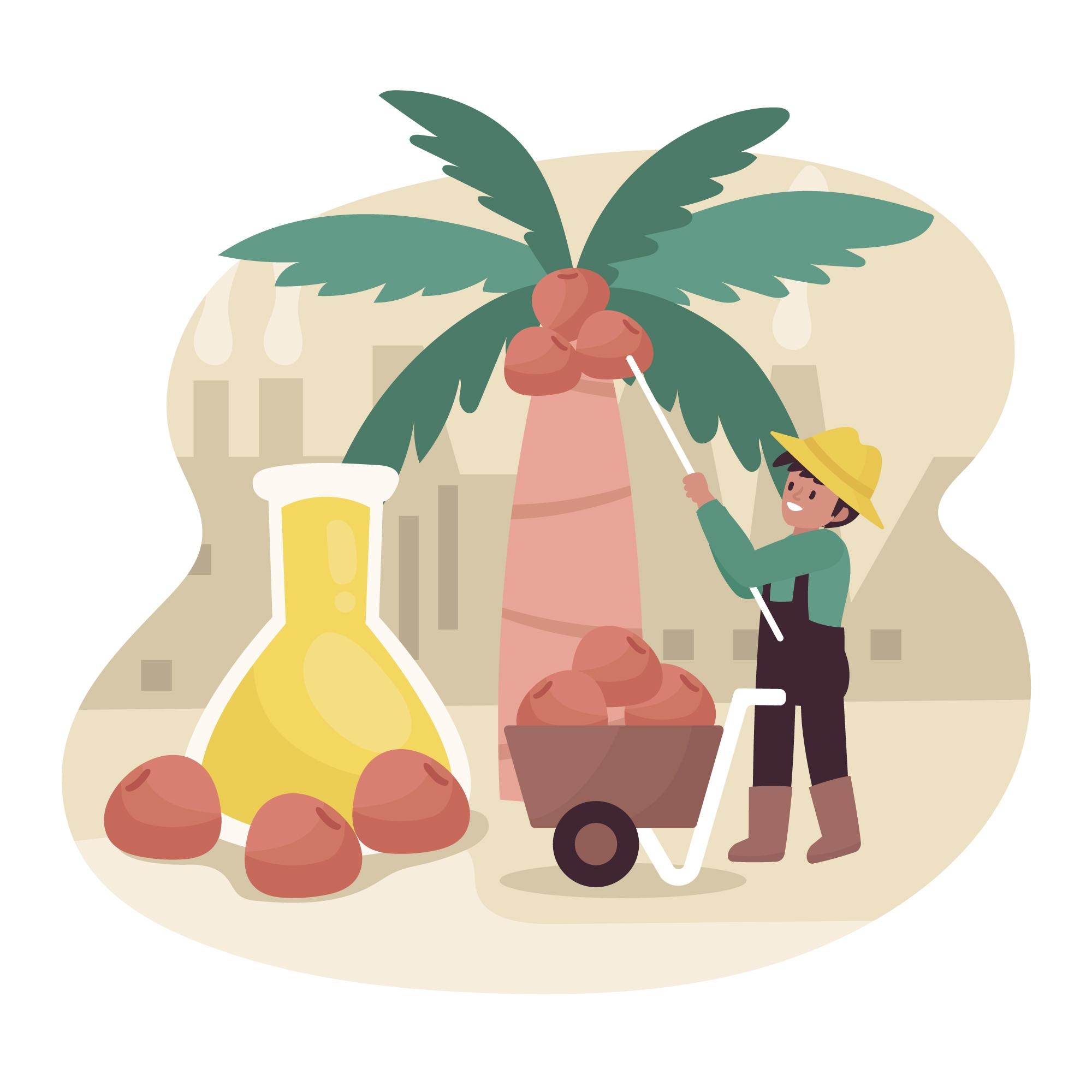Palm Oil Pricing: Decoding the Commodity Market's Trends and Patterns

Palm oil, often referred to as the "golden crop," stands as one of the world's most versatile and widely used vegetable oils. Derived from the fruit of oil palm trees, primarily cultivated in tropical regions, palm oil plays an indispensable role in various industries, from food to cosmetics and biofuels. In this in-depth analysis of palm oil pricing, we will delve into the intricacies of this essential commodity and unravel the multifaceted factors that underlie its pricing trends.
Understanding Palm Oil
Before we explore the complexities of palm oil pricing, it's crucial to grasp the fundamentals of this ubiquitous commodity. Palm oil is extracted from the flesh and kernel of oil palm fruits. Its unique chemical properties, such as high stability and versatility, have made it a cornerstone of the global food industry. As one of the most consumed vegetable oils worldwide, palm oil production and pricing exert a significant influence on numerous sectors.
Factors Shaping Palm Oil Pricing
The pricing of palm oil is subject to a complex interplay of factors, encompassing both internal and external forces. To gain a comprehensive understanding of palm oil pricing dynamics, it is imperative to dissect these influences in detail.
Climate and Weather Conditions:
Weather conditions, particularly in palm oil-producing regions, wield considerable influence over pricing. Extreme weather events like droughts and excessive rainfall can disrupt production, resulting in price volatility. The susceptibility of palm oil plantations to climate fluctuations underscores the necessity for climate-resilient farming practices and predictive modeling to mitigate risks.
Supply and Demand Dynamics:
Global demand for palm oil is characterized by constant fluctuations. Factors such as population growth, dietary preferences, and the emergence of new markets all impact demand levels. Concurrently, palm oil production is influenced by factors like planting cycles, advancements in agricultural technology, and the availability of arable land. Understanding the intricate balance between supply and demand is pivotal for predicting pricing trends accurately.
Government Policies:
Governments in palm oil-producing nations wield substantial power in shaping pricing dynamics through various policies. These policies range from subsidies and export restrictions to regulations about land use and sustainability practices. The evolving nature of government policies adds a layer of complexity to the palm oil pricing landscape, necessitating ongoing assessment and adaptation by market participants.
Historical Pricing Trends
To gain deeper insights into current pricing, it is imperative to examine the historical trends that have characterized the palm oil market over the years. These trends provide valuable lessons and context for stakeholders and investors.
The Boom and Bust Cycle:
The palm oil market has experienced distinct periods of rapid growth followed by significant price declines. These cycles are often tied to factors such as oversupply, shifts in global demand, and broader economic conditions. Analyzing the root causes behind these cycles enables market participants to make more informed decisions.
Seasonal Fluctuations:
Palm oil pricing exhibits pronounced seasonal variations, with prices rising and falling predictably throughout the year. These fluctuations are closely linked to factors such as weather conditions, planting cycles, and harvest seasons. Recognizing the seasonality of palm oil pricing is indispensable for businesses and investors looking to optimize their strategies and minimize risks.
Environmental Concerns and Sustainability
In recent years, environmental concerns surrounding palm oil production have garnered global attention. Issues such as deforestation, habitat destruction, and social impacts have led to sustainability challenges within the industry. Consequently, sustainable palm oil initiatives have emerged, aimed at mitigating these issues and exerting a positive influence on pricing trends. Consumers, environmental organizations, and industry stakeholders alike have called for greater transparency, accountability, and sustainability in palm oil production.
Palm Oil Pricing Forecast
Predicting the future of palm oil pricing entails a complex analysis of the multifaceted factors at play.
Short-term Projections:
Short-term movements in palm oil prices are influenced by a myriad of dynamic factors, including weather conditions, geopolitical events, supply chain disruptions, and market sentiment. Staying well-informed about these factors is essential for industry participants seeking to navigate the ever-evolving landscape of palm oil pricing successfully.
Long-term Predictions:
Investors and industry players with a long-term perspective must consider a broader set of factors that will shape the trajectory of the palm oil industry in the years to come. These factors encompass global population growth, sustainability practices, technological advancements, and evolving consumer preferences. Understanding the intricate interplay of these elements is critical for making well-informed, forward-looking decisions in a rapidly evolving market.
Conclusion
In conclusion, palm oil pricing represents a multifaceted domain, intricately intertwined with a multitude of factors, both internal and external. Navigating this intricate market necessitates a deep comprehension of historical trends, sustainability initiatives, and the ever-shifting dynamics of supply and demand. Whether you are an investor seeking strategic insights or a conscientious consumer concerned with sustainability, staying well-versed in these factors is paramount for making informed decisions in the palm oil market.
This comprehensive exploration of palm oil pricing provides a holistic view of the commodity's complexities, offering valuable insights for industry stakeholders. The intricate interplay of climate, supply and demand, government policies, historical trends, environmental considerations, and long-term predictions collectively contributes to the rich tapestry of palm oil pricing dynamics.
To Get Real-Time Price of Palm oil Visit: https://pricevision.ai
- Industry
- Art
- Causes
- Crafts
- Dance
- Drinks
- Film
- Fitness
- Food
- Jogos
- Gardening
- Health
- Início
- Literature
- Music
- Networking
- Outro
- Party
- Religion
- Shopping
- Sports
- Theater
- Wellness
- News


